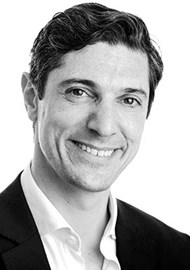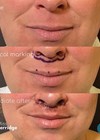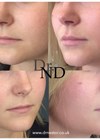A surgical lip lift is particularly effective in lips that require both an increase in vertical height and eversion. Upper lip lifts have been described since the 1980s [1,2] but the most commonly used form was described by Oscar Ramirez in 2003 [3], the bullhorn lip lift. There have been many variations of this, including the seagull lift, the Italian lift, the Batman lift and the Cupid bow lift.
I have found an increasing number of patients seeking lip lifts over the last few years; often they have tried lip fillers without achieving their desired result.
Lip lift patients can broadly be categorised into three groups:
- Rejuvenation patients – With ageing there is a lengthening of the nose-mouth distance and a thinning and inversion of the pink lip. These factors can be addressed using an upper lip lift.
- Facial proportions – A lip lift can help produce a foreshortening illusion to the lower third of the face, improving the appearance of overall facial proportions.
- Secondary or revision cases – often due to sub-optimal scarring or under-correction from previous surgery.
Whichever type of patient, the key points and principles I have come to appreciate are:
- There will always be some relaxation of the tissues, so it is important to slightly overcorrect. Between a third and a half of upper lip skin is usually excised (any less and the patient will have the scar and very little effect from the lift in due course).
- The patient will normally see the final result at three to four months, after the tissues relax. It is important to inform them of this and manage their expectations.
- Strong fixation to the deep tissue around the anterior nasal spine and around the base of the nose is paramount to anchor the elevated tissue, support good scar formation and minimise scar stretch and descent.
- Undermining of the caudal upper lip skin is helpful for mobilisation and to relieve tension on the final scar.
- A suitable patient for this procedure is one with a broad nasal base and a small mouth; an unsuitable patient has the opposite – a narrow nose and wide mouth. The latter invariably results in an over-concentration of lift in the central third. This might be appropriate in some cases, but not in all.
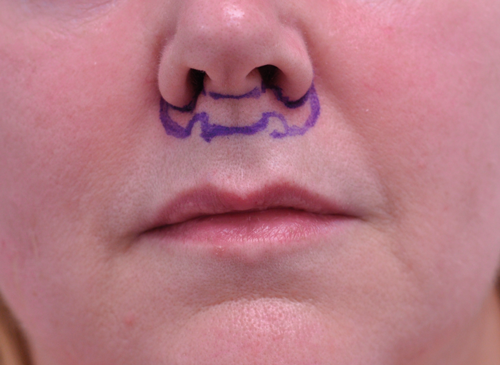
Figure 1: Lip lift markings: a modification of the bullhorn lip lift. The markings taper around
the alar margin, and extend slightly into the nostrils to the junction of nasal and upper lip skin.
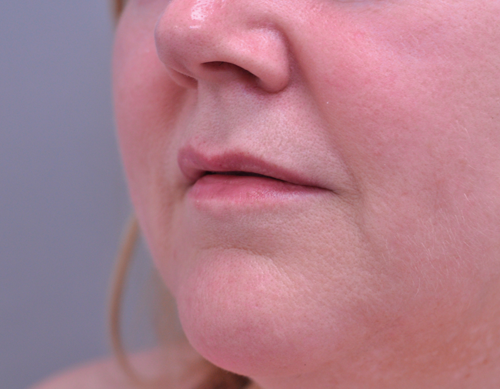
Figure 2: Before a lip lift – a patient with a disproportionately long nose-mouth distance.
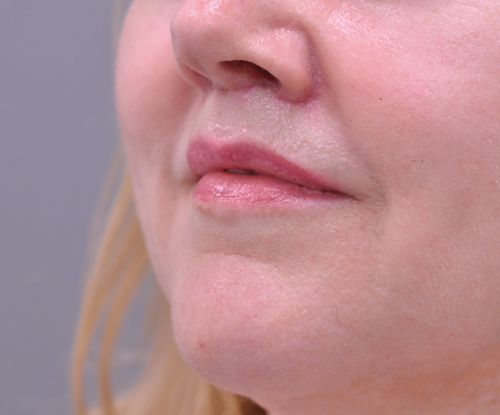
Figure 3: Four-months after the procedure, demonstrating the scar positioning.
This scar will fade with time to become almost imperceptible.
I perform the operations under local anaesthetic (with an intra-oral dental block being administered prior to local infiltration). I use five 4/0 PDS (Ethicon, Johnson & Johnson, Belgium) for deep fixation (central, at each nostril base and infero-laterally at the alar creases) and multiple 6/0 Prolene sutures to be removed at six days postoperatively. The wounds are dressed with Micropore™ Skin Tone surgical tape (3M, Bracknell, UK). The average operating time is 40 minutes. Re-taping is then performed to provide further lip support. Significant swelling over the first few days then dissipates, but it can take six weeks for the swelling to fully resolve.
Complication rates are low if care and attention is taken with the procedure and fixation. Patient satisfaction is high, but as ever, this is also dependent on managing expectations and careful patient selection.
References
1. Rozner L, Isaacs GW. Lip lifting. Br J Plast Surg 1981;34(4):481-4.
2. Austin HW. The lip lift. Plast Reconstr Surg 1986;77(6):990-4.
3. Ramirez OM, Khan AS, Robertson KM. The upper lip lift using the ‘bull’s horn’ approach. J Drugs Dermatol 2003;2(3):303-6.
Declaration of competing interests: None declared.
COMMENTS ARE WELCOME


